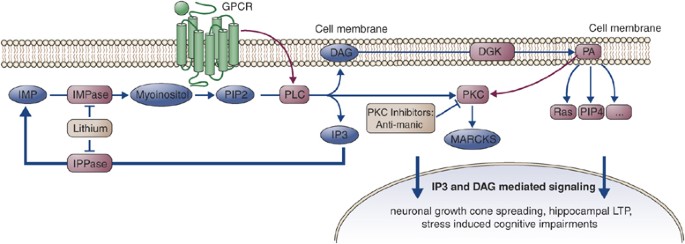Diacylglycerol kinase (DGK) plays a crucial role in regulating several signaling pathways involved in various physiological processes. DGK converts diacylglycerol (DAG) to phosphatidic acid (PA), thus modulating the levels of these lipid second messengers, which in turn influence downstream signaling. Dysregulated DGK activity has been linked to several diseases, including cancers, cardiovascular disorders, and inflammatory diseases. Therefore, DGK inhibitors are being explored as potential therapeutics. In this article, we will discuss the DGK Inhibitors Library, its significance, and how it can be utilized in drug discovery.
DGK Inhibitors Library:
The DGK Inhibitors Library is a collection of small molecule inhibitors designed to target specific isoforms of DGK, which exhibit distinct functions and have been implicated in various disease pathways. The library comprises compounds that selectively inhibit DGK through different mechanisms, thus offering a range of strategies for modulating DGK activity.
DGK Isoforms and Their Role in Diseases:
DGK has ten different isoforms, categorized based on their structural and functional properties. Different DGK isoforms display tissue-specific expression patterns, and their dysregulation has been implicated in various diseases, including cancer, immune disorders, and cardiovascular diseases. Here are some examples of DGK isoforms and their potential role in diseases:
DGKα: DGKα is highly expressed in the heart and regulates cardiac function. Studies suggest that DGKα inhibition can provide cardio-protective effects, making it a potential target for heart failure.
DGKβ: DGKβ is expressed in the immune cells and modulates immune responses. Dysregulation of DGKβ has been linked to autoimmune disorders, such as multiple sclerosis.
DGKγ: DGKγ plays a crucial role in T-cell activation and differentiation, making it a promising target in immunomodulation and autoimmune diseases.
DGK Inhibitors and Their Mechanisms:
The DGK Inhibitors Library comprises compounds that target specific isoforms of DGK through different mechanisms. Here are some examples of DGK inhibitors and their modes of action:
R59022: R59022 is a selective inhibitor of DGKα that binds to the ATP-binding site of the enzyme, preventing its activity.
R59949: R59949 is a potent and selective inhibitor of DGKβ that inhibits its activity by binding to the C1 domain and blocking DAG binding.
HI-131: HI-131 is a selective inhibitor of DGKγ that binds to its ATP-binding site and prevents catalytic activity.
Significance of DGK Inhibitors Library in Drug Discovery:
The DGK Inhibitors Library presents a new frontier in drug discovery, offering innovative strategies for modulating DGK activity in different disease pathways. Exploring the potential of DGK inhibitors requires a multi-disciplinary approach, integrating molecular biology, chemical synthesis, and pharmacology.
Target Identification and Validation:
The first step in developing DGK inhibitors is to identify promising targets and validate their role in specific diseases. This involves a comprehensive understanding of the isoform-specific functions of DGK and their regulation in different diseases.
Compound Design and Synthesis:
The compounds in the DGK Inhibitors Library are designed by employing structure-based drug design approaches, targeting specific isoforms and designing selective and potent inhibitors. The synthesized compounds undergo in vitro screening to evaluate their inhibitory activity and mode of action.
Preclinical Studies:
Lead compounds identified through screening undergo preclinical studies to assess their pharmacological and toxicological properties. This includes evaluating their bioavailability, pharmacokinetics, and efficacy in animal models of disease.
Clinical Development:
The lead compounds that demonstrate favorable pharmacological and toxicological profiles are advanced to clinical trials to evaluate their safety and efficacy in humans. The outcome of these clinical trials guides the development of novel therapeutics.



